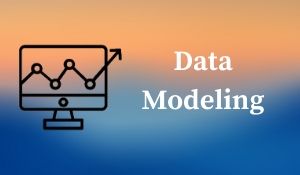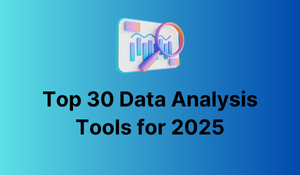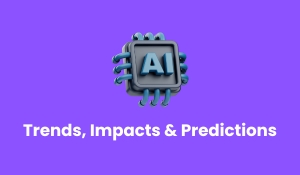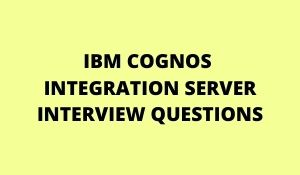
Introduction to Data Modeling
The process of creating a model for the storage of data in a database is termed data modeling. Data modeling is a procedure of detailing information in a data framework in a structured format. It helps in investigating information effectively which will additionally help in meeting business requirements.
The procedure of information displaying requires information modelers who will unequivocally work with partners and planned clients of a data framework. The information demonstrating process closes with the formation of an information model that bolsters the business data framework foundation. This procedure likewise includes understanding the structure of an association and proposing an answer that empowers the association to accomplish its goals.
Fundamental things you will concentrate on in this Tutorial
Primary explanations behind utilizing an Data model
Perspectives of a Data Model
Types of Data Models
Facts and Dimensions
Keys Related to Dimensional Modeling
Primary explanations behind utilizing a Data model:
The visual portrayal of information improves information examination. It gives a comprehensive image of the information that can be utilized by designers to make a physical database.
All significant information of an endeavor is precisely introduced in the model. The information model decreases the odds of information oversight. Information exclusion can prompt wrong outcomes and broken reports.
The information model depicts a superior comprehension of business prerequisites.
It helps in the production of a hearty structure that brings the whole information of an association on a similar stage. It helps with distinguishing the repetitive, copied, and missing information.
A qualified information model aids in giving better consistency over all tasks of an endeavor.
It improves information quality.
It helps Project Managers with a superior degree and quality administration. It likewise improves execution profoundly.
It characterizes social tables, put-away strategies, and essential and outside keys.

Three Perspectives of a Data Model
Conceptual Model:
This level characterizes what should be available in the structure of the model so as to characterize and arrange business ideas. It for the most part centers around business-situated passages, properties, and relations. It is fundamentally structured by Data Architects and Business Stakeholders.
Logical Model:
The legitimate model characterizes how the model ought to be executed. It comprehensively incorporates a wide range of information that should be caught, for example, tables, sections, and so on. This model is commonly structured by Business Analysts and Data Architects.
Physical Model:
The physical model characterizes how to actualize an information model with the assistance of the database and the board framework. It traces the usage procedure as far as tables, CRUD activities, lists, dividing, and so forth. It is made by Database Administrators and Developers.
Types of Data Models
Hierarchical Model:
This is a database demonstrating that depends on a tree-like organization. Here, every one of the records has a solitary root or parent. With regards to kin records, they are arranged in a specific request. This request is utilized as the physical request for putting away the database. You can utilize this sort of display for some, certifiable model connections. Be that as it may, because of certain wasteful aspects, they are once in a while utilized at this point.
| Learn more information from the GoLogica “Data Modeling Training“ |
Relational Model:
It doesn’t expect engineers to characterize the information way. Here, information fragments are expressly joined with the assistance of tables. This model has diminished the program’s unpredictability. It requires information on the physical information stockpiling embraced by the association. Not long after the presentation of this model, it was joined with Structured Query Language (SQL).
Network Model:
This model can be based on the progressive model, wherein it permits different connections among connected records which infers that it has numerous parent records. According to the numerical set hypothesis, we build the model with the establishment of related precedents. Each set comprises a parent record and various kid records. Each record can have a place with different sets and permits the model for passing on complex connections.
Object-oriented Database Model:
The Object-oriented database model comprises of an assortment of items. These articles have related highlights and strategies. We have different sorts of item-arranged databases, to be specific interactive media databases, hypertext databases, and then some. This sort of database model is known as a post-social database model as it isn’t constrained to tables, even though it fuses tables. Another such kind of database model is a hybrid model.

Entity Relationship Model:
The Entity relationship model is a graphical introduction of elements and their connections. It is otherwise called the substance relationship (E–R) chart. An element can be called an idea, a bit of information, or an item about which the information (and the relations encompassing the information) is put away.
Object-relational Model:
The Object-relational Model: model as a social model having the propelled usefulness of the article situated database. This sort of database model permits is to let originators consolidate their capacities into a natural table structure.
Facts and Dimensions
Fact Table: It is a table containing estimations and the granularity of each estimation. Realities can be added substances or semi-added substances, for instance, deals.
Dimension Table: It is a table that gathers fields containing depictions of business components and is alluded to by different truth tables.
Dimensional Modeling: Dimensional demonstrating is a structured procedure of an information distribution center. It utilizes affirmed measurements and realities and aids in a simple route. Dimensional demonstrating configuration helps in quick execution inquiry. Dimensional models are also known as star schemas.
Keys Related to Dimensional Modeling
Business or Natural Keys: It is a field that interestingly recognizes an element. For instance, client ID, worker number, and so forth.
Primary and Alternate Keys: Any field containing an exceptional record can be called an essential key. The client needs to choose one of all accessible essential keys, and the rest of them become substitute keys.
Composite or Compound Keys: When more than one field is utilized to speak to a key, it is alluded to as a composite key.
Surrogate Keys: It is a field with no business meaning and is typically auto-created.
Foreign Keys: It is a key that focuses on another key in some other table.
The procedure of information demonstration includes planning and delivering a wide range of data models. These Data models are then changed over through a Data definition language. Data definition language is utilized to produce a database. This database will at that point be named as a completely attributed data model.
Related Articles:
🎯 Data Modeling Interview questions and answers – 2024
🎯 7 Data Modeling Techniques and Concepts for Business
🎯 Business Leaders Need to Know About Data Modeling
🎯 Importance of Data modeling and using different Technologies in Data Modeling
🎯 Overview, Basic Concept, and Types in Details On Data Modelling
🎯 6 What is the best data modeling Tool to use in 2024?











